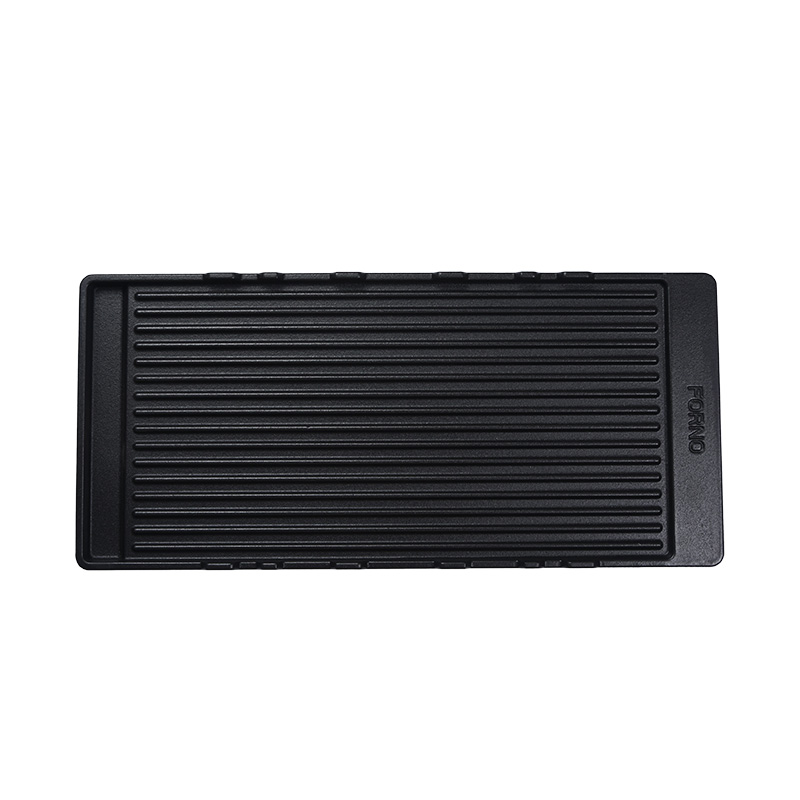Heat Retention: The thickness of a cast iron baking sheet fundamentally enhances its ability to retain heat. Cast iron is known for its heat retention properties, and the thicker the sheet, the more heat it can hold over time. When a baking sheet retains heat efficiently, it provides a more stable cooking environment. This stability ensures that food placed on the sheet is exposed to consistent and even temperatures, a critical factor for achieving uniform results. Unlike thinner sheets, which may cool down quickly when food is placed on them, thicker cast iron maintains its heat, reducing the likelihood of uneven cooking, such as an underbaked center or overcooked edges. This feature is particularly beneficial when working with temperature-sensitive baked goods like bread, biscuits, and pizzas. The thickness of the sheet allows for even browning and a consistent rise, improving the overall texture and flavor of the final product. The steady heat flow helps ensure that baked goods cook uniformly from all sides, contributing to professional-grade results with a golden, perfectly cooked finish.
Slow Heat-Up: The thicker cast iron baking sheet requires a longer time to reach the desired temperature, and this is due to the sheer volume of material that must absorb heat. While this slower heat-up time might seem like a drawback, it is, in fact, a key advantage. Once heated, a thick cast iron sheet holds onto the heat far longer than its thinner counterparts, allowing for prolonged and even cooking sessions. This extended heat-holding capability means that when items are placed on the sheet, there is minimal fluctuation in temperature. In thinner sheets, placing cold or room-temperature food on the sheet can cause rapid cooling, leading to uneven baking. With a thicker sheet, this issue is largely mitigated. For example, when roasting vegetables or baking meats, the slow but steady heat ensures an even caramelization and thorough cooking, helping to lock in juices and flavors. This slow heat response is ideal for baked goods that require gradual heat buildup, such as artisan bread or puff pastries, where controlled temperature increases are crucial for structure and texture development.
One of the standout benefits of using a thicker cast iron baking sheet is the improved crust formation it provides. This advantage is particularly relevant for bakers seeking the perfect balance between a crispy exterior and a tender interior. Thick cast iron sheets, thanks to their excellent heat retention and even distribution, promote the Maillard reaction—a chemical process that occurs between amino acids and sugars, resulting in browning and flavor development. The increased heat capacity of a thick sheet ensures that baked goods are exposed to high temperatures uniformly across their surface, leading to a well-formed, golden crust. For example, when baking bread, a thick cast iron sheet helps create a crisp, crackling crust while maintaining a moist, airy crumb inside. Similarly, for items like pizzas, pies, or roasted vegetables, the consistent high heat allows for caramelization and browning, enhancing both the texture and taste. Thin baking sheets often fail to achieve this effect, leading to soggy or unevenly cooked results. The thickness of the cast iron baking sheet transforms the final product by delivering a professional-quality finish that balances flavor, texture, and appearance.
